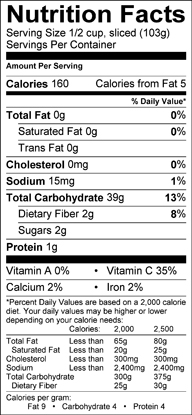Select firm berries and have a deep color. Avoid berries that are decaying, mushy, or bruised.
Look for clusters of berries that are deep purple-black in color and plump. Ripe clusters are heavier than unripe clusters and tend to hang upside down.
Remove moldy or mushy berries then store in the refrigerator (in the original package) for up to 1 week. Wash berries just prior to use.
Here are a couple of methods for removing the tiny berries from the stems. You'll notice that the tiny stems that attach the berries to the larger stems are fibrous and a bit stubborn; de-stemming elderberries is definitely the most time-consuming part of the job.
By Hand: Gently tug the berries free from their micro-stems and place them in a clean bowl.
"Forking Elderberries": Use the tines of a fork to strip the berries free from their micro-stems. Do this over a large bowl, as the berries tend to fly free, and if you aren't careful, you'll have berries all over your floor!
The Freezer Method: This method works great if you can tolerate a few micro-stems in your recipe. After your berries have been cleaned and drip-dried, place them in a freezer bag and put them straight into the freezer for at least 24 hours. (Longer is fine!). Take the frozen bag of berries out of the freezer and gently slap the bag against the counter to knock the berries off the micro-stems. When most of the berries are free, open the bag and remove the stems.
Low in fat, saturated fat free, cholesterol free and sodium free. An excellent source of fiber, vitamins A, C and B6. A good source of vitamin E, copper and iron.
